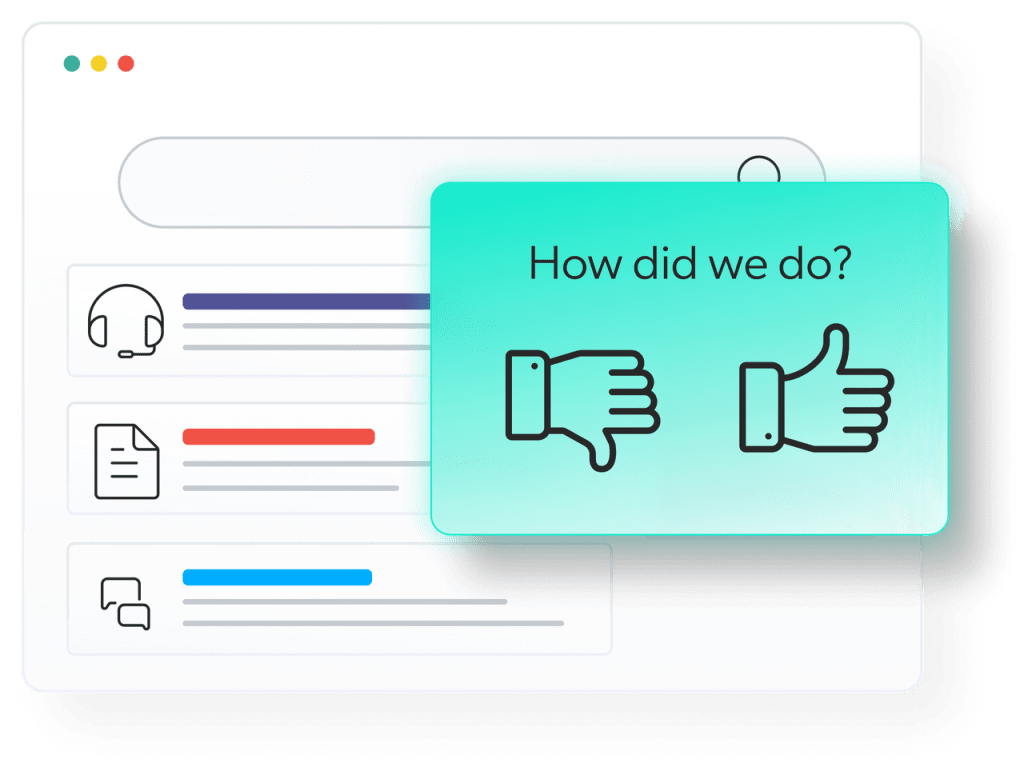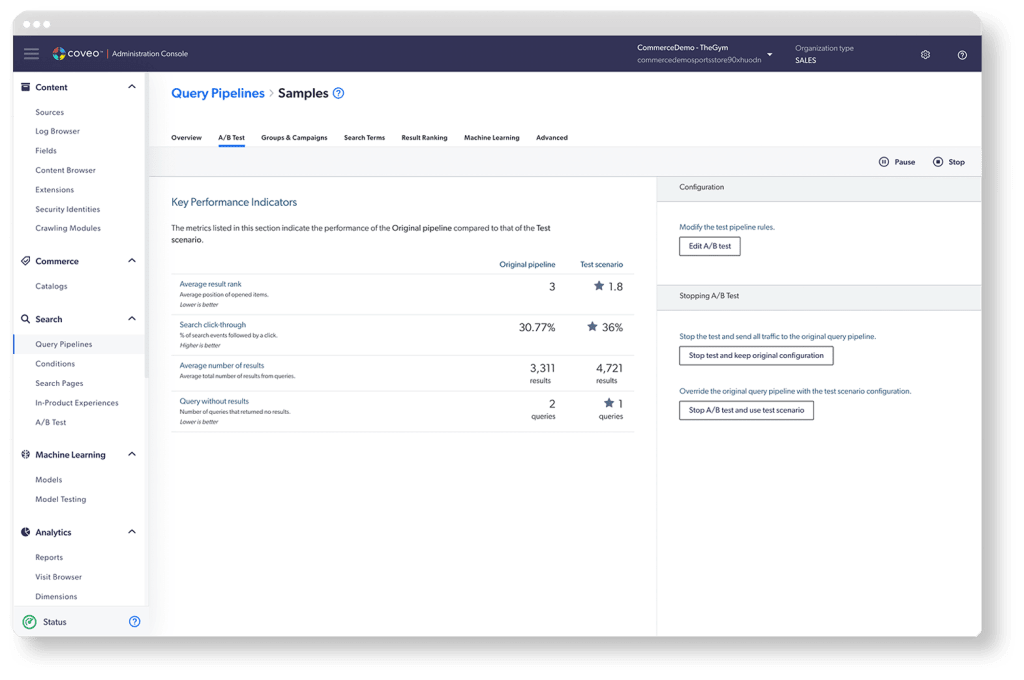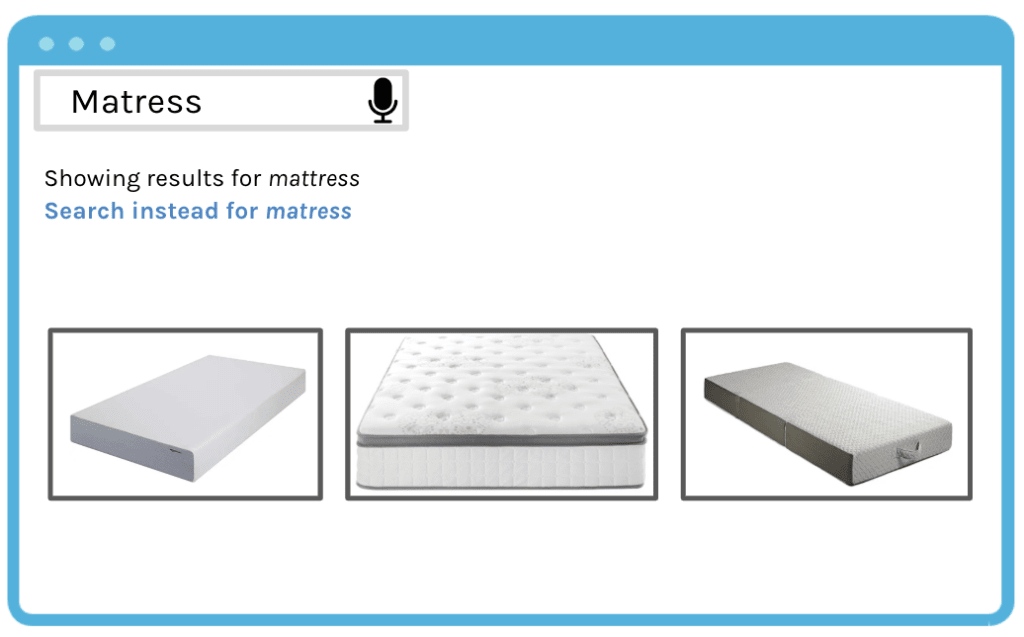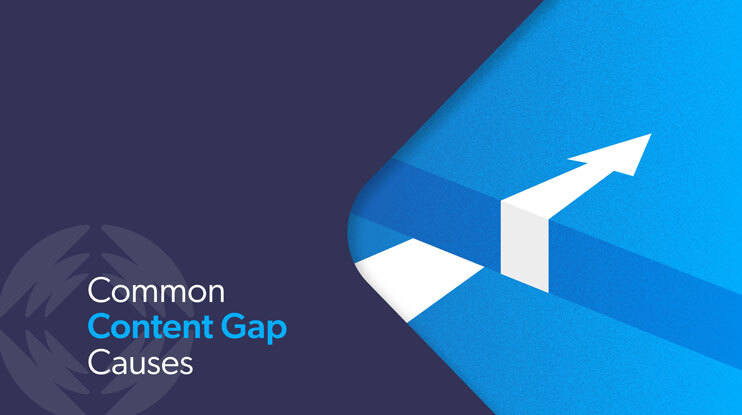Did you know that contact gaps can be a hurdle to overcome when implementing a generative AI strategy?
When searching for specific information on the web or a brand’s website, content gaps can be a big challenge. Content gaps are one cause of AI hallucinations in generative experiences — but this is treatable using Retrieval Augmented Generation, or RAG.
Even with an AI-powered search platform and a stellar knowledge management program, there are ways content gaps can result. Let’s dive into what they are, how to identify them, and what to do about them.
What Is A Content Gap?
A content gap can occur anywhere existing content lives in your organization. It’s defined as either missing or unfindable content. These can cause user queries and keywords to yield irrelevant results like old content or no search results at all.
What might this look like? Let’s look at two scenarios.
Picture a brand new employee embarking on their training journey. As their first step, they’ve been instructed to log onto the company’s intranet and locate the employee handbook. They type “employee handbook” into the search bar. But when they hit the search button, they get results that have nothing to do with their query. (Or, even worse, no results.)
This new employee has discovered a content gap. Though the handbook may exist somewhere within the organization’s system, it’s not findable via the company’s enterprise search. While this could have happened for many reasons, the unfortunate reality is that the employee’s experience has started out negative.

Now picture a customer experiencing a content gap on your company website. Maybe they’ve purchased a new product, and they need help setting it up at home. They type “[product name] set up instructions” into your site search engine, and come up short. Not a great example for an end-to-end customer journey. Your customer still has options: keep looking, create a customer service request, or give up altogether and return the product.
The point is, when information is hard to find it creates friction in the customer experience. This can hurt their perception of your brand, which can translate to lost revenue or poor reputation.
Why Are Content Gaps Problematic?
Customers expect to be able to find the products and information they’re looking for with ease. In our 2023 Ecommerce Relevance Report, “difficult to find what I wanted” was the second most common frustration while shopping online, right after a slow-loading website. Similarly, employees expect to easily find answers to their questions and helpful resources that support them. In our Workplace Relevance Report for 2023, content findability was an important factor for creating a positive employee experience.
If finding information is so important, why is it that organizations struggle with content findability?
Content gaps can cause your organization a variety of problems both internally and externally. They can result in missing or outdated information on your company website or other communication channels. Obviously, this can be confusing for customers, leading to a loss of trust and credibility.
The most impactful effect is the loss of revenue. According to Forbes, 73% of consumers say a good experience is key in influencing their brand loyalties. So providing an effective and seamless online experience is vital to winning over customers and their wallets. If a customer can’t find what they’re looking for on your site, they’ll likely look to a competitor instead.

Internally, content gaps can produce major inefficiencies. They inhibit the effective sharing and retrieval of important information between employees. Ultimately, this can cause friction within the customer service process. For example, customer support agents might spend extra time answering repetitive customer inquiries that could have been answered via self-service. Because the information isn’t readily available, this results in increased workload on teams, decreased productivity, and higher support costs.
Overall, content’s availability is crucial to an organization’s productivity and day-to-day operations.
What Is A Content Gap Analysis?
Need a content idea for your content marketing strategy? Perform a gap analysis.
A content gap analysis is the process used to identify the gaps or opportunities in a website’s content. It involves performing a content audit, evaluating your existing content, and comparing it to your end users’ desired content or search intent. The goal is to identify areas where content is missing or where improvements can be made to your content strategy.
Understanding what content your customers or employees are looking for is crucial in doing a content gap analysis. This can often be done by looking at your search analytics tool to identify which content was searched for and, ultimately, not found. From there, you can deduce why the gap might have occurred, and then decide on a fix.
How Do You Perform A Content Gap Analysis?
To perform a content gap analysis, first identify gaps in your existing content using your search analytics. Then look at their causes. Understanding the causes is the first step to closing the content gaps that can produce negative customer and employee outcomes.
6 Common Content Gap Causes
1. Missing Content:
A common reason for a content gap is that the content simply does not exist. Or, it hasn’t been indexed by your search platform.
Within your search analytics tool, look for queries that came up with no hits (that is, no results). Then look at what keyword the end user was searching for when this happened.
Maybe the content that the end user needed exists, but doesn’t include the particular keyword searched for. Or, maybe your website search platform isn’t connected to where the content exists within your tech stack. You can then identify if content creation is needed, or if content needs to be optimized for a particular keyword.
If users are searching for items that aren’t relevant to your business, you can likely ignore this as a non-issue. However, if you notice a pattern where a large number of end users are looking for the missing information, you may want to consider adding this new content to your index.
2. Query Pipeline Issues
The rules set up within your query pipeline can affect your content’s findability. Sometimes, too many query conditions can restrict results and create content gaps. Query pipeline conditions often involve keyword matching and filtering. If these keywords don’t cover the full range of relevant terms, variations, or synonyms that users might use, it can lead to content gaps.
Users may have queries that match content on the website. But if the pipeline fails to capture and present that content, there won’t be sufficient results. It’s vital to ensure that pipeline conditions are aligned with the content available and include all different types of content. This includes everything from video content to blog post content. All the way to product descriptions to ensure that anything that’s relevant to a user query is findable via your search function.

To eliminate content gaps due to query pipeline issues, ensure that query pipelines are well-designed and include a range of related keywords and search intent. It’s also important to regularly review and refine the query pipeline conditions to ensure they align with your user’s latest expectations and needs.
Incorporating personalization elements into the query pipeline can also help provide more tailored and relevant results and eliminate content gaps for individual users. In today’s digital climate, users expect personalization — 71% of consumers to be exact (and 76% of consumers get frustrated when it’s not offered by businesses).
Personalization factors like user preferences, browsing history, or demographic information can help tailor results to the specific needs and interests of each user and minimize content gaps for a better user experience.
3. Overly Restrictive Query Filters
Query filters can be extremely helpful in refining results, but sometimes, filters selected by the end user can be too restrictive, limiting the content that appears in the results. This can happen due to narrow matching criteria, where filters are set too finely and end up excluding content that could be relevant to users.
Limited content metadata could also cause this issue. Oftentimes, query filters rely on metadata, such as tags or categories, to determine which content to include or exclude from results. If the metadata is limited or not comprehensive enough, relevant content that doesn’t quite fit within the defined categories or tags may be filtered out, resulting in content gaps.
To solve for restrictive query filters, it’s important to regularly review and adjust query filters to ensure a balance between inclusiveness and relevancy. You can also incorporate more flexible matching criteria that consider broader variations, related terms, and contextual relevance.
Machine learning and natural language processing can be helpful in improving matching criteria over time. Lastly, you can expand the range and specificity of your content’s metadata to provide more accurate results.
4. Invalid Query Syntax
Invalid syntax interferes with the retrieval of relevant content and can result in returning no results at all. If a user enters a query with syntax errors — such as missing quotation marks, incorrect conjunctions, or misplaced parentheses — the search system may not understand the query and could fail to retrieve the intended content. For instance, if a user types in OR when AND is appropriate, it can alter the search logic and create content gaps.
To avoid this, you can monitor search logs or analytics to identify instances of invalid queries and analyze patterns to improve the search system. You can also implement AI and machine learning to handle syntax errors, providing users with helpful feedback or suggestions to correct their queries.
AI can also be used to offer users guidance as they type with features like auto-complete or intelligent query assistance that will help users construct valid queries.

5. Lengthy Queries
When an end-user submits a query containing too many keywords, the index may not be able to find items matching all of those keywords. This can result in no results or irrelevant ones. Lengthy queries often involve multiple keywords, conjunctions, and modifiers. If your search system is not designed to handle this kind of complexity, it may struggle to accurately interpret and process the query.
You can avoid this issue by enhancing your search algorithms and systems to handle more complex query structures effectively and enable supporting features like partial matches. You can also lean on AI and machine learning to enhance your system’s ability to interpret lengthy queries accurately and extract relevant information.
6. Misspelled Query Words
When an end-user submits a query containing one or more misspelled keywords, that query may return no results. If the system too strictly matches queries against exact word spellings, it may not recognize the misspelled word as a valid term, leading to content gaps.
To help mitigate this issue, you can enable features like the “Did You Mean” feature which typically helps avoid misspelled words. You can also implement spell-checking or auto-correction in the search system to suggest corrected versions of misspelled words to users.

To improve the system’s ability to identify relevant content even with misspelled words, you can also apply additional matching conditions that account for more variations, such as phonetic or approximate matching, to improve the system’s ability to identify relevant content.
Search suggestions or auto-complete features that assist users in correcting their misspelled words can also help guide them toward relevant content. Lastly, it’s important to continuously update and refine the search system’s dictionary or vocabulary to include common misspellings and variations.
Mind Your (Content) Gaps
Improving the findability of the right content on your website, whether for customers or for employees, is vital in avoiding content gaps and creating a positive user experience. Content gap analyses can help you identify why users aren’t finding the right content, if you need new content or better content, if there’s old content that needs updating, and how to improve the overall search experience for your users.
To explore how to further improve your site search download 8 Best Practices For Improving Your Site Search Experience.



